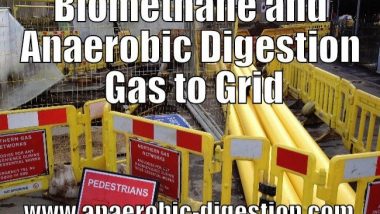
When a gas engine or turbine is used to generate electricity without CHP, after the electricity leaving the site, there is also hot “cooling water” that is used to keep the jacket around the engine and generator windings cool.
This heat energy was traditionally not used.
Non-renewable energy was so cheap and considered to be inexhaustible. So, instead of being used the heat had to be disposed of. The solution was, and often still is to install a cooling plant.

Traditional Engine Cooling System vs CHP System
A cooling plant comprises a radiator and with a fan to cool the radiator in hot weather. It simply vents the heat to the atmosphere. Combined heat and power systems use that heat.
In Combined Heat and Power Systems (CHP), the heat is used in some way. The most common method is to send the hot water through an insulated pipeline to a space heating radiator in a remote home, office, or factory.
Or, the hot water delivered may be used to warm more water for industrial hot water uses. The result is that CHP provides a lot more useful thermal energy in an integrated system.
This means that CHP is not a technology, but a concept, there are many ways to apply different technologies to CHP.
Heat is used when it would otherwise be wasted during the normal methods which of separate generation of heat and power.
Benefits of Combined Heat and Power Systems (CHP)
It is hard to appreciate just how big the benefits of CHP can be.
Experts say that the conventional methods of producing usable heat and power separately usually achieve no better than a combined efficiency of use of the original energy output of 45%.
Amazingly Combined Heat and Power Systems operate at levels as close to 80%.
Just stop to think for a moment now, just how wasteful the old “normal” method has been!
Another term used to describe CHP has been “district heating”. That's because the CHP output from incinerators and local power stations has often in the past been so large that whole city districts can be heated by the hot water.
Watch our video below to find out more about the combined heat and power units which are container-based and normally fitted to anaerobic digestion plants:
But, don't forget to come back after watching and SCROLL DOWN this page for more information on this interesting way of gaining more renewable energy for less!
3 Important Considerations When Designing Combined Heat and Power Systems
- Payoffs for adding CHP to an existing biogas generation plant installation can be fast, and as quick as 12 to 18 months, but not always. It is essential to do some detailed analysis of the true value of the heat you will gain from installing heat exchangers to output this useful hot water. The heat (hot water) from any Combined Heat and Power System is only going to be as hot as it now enters the cooling system. Check that this will be hot enough for the purpose the hot water, or heat will be used. For space heating, it is usually fine, but just remember that it will not be hotter than the cooling jacket temperature.
- Next check the synergy of time. The hot water produced will need to be output at the times when it is needed. For example, if the heat is to be used for crop drying, does the crop drying requirement coincide seasonally with the usage of the generation equipment? That output may be used, in some cases, only at times when the electricity company pays the best rate each day for the power. Conflicts of this sort are likely to occur, and this is not a problem as long as the calculation of the value of the CHP power is done in a way that makes due allowance for them. Although there may be on-farm uses they may prove to give a lower payback than for instance installing a longer insulated pipeline to a nearby factory that has a 24/7 demand for hot process water.
- Make sure that you also make a realistic evaluation of the current costs of the power that the CHP energy source would replace. At the current time of writing, electricity tariffs and diesel costs per litre have been dropping due to the low cost of oil. Take a view on the extent to which that drop may continue and build in a margin for a further potential drop, making sure that the investment decision takes a cautious approach.
Conclusion – CHP is a Win-win Concept
CHP technology can be deployed quickly, cost-effectively, and with few geographic limitations. CHP can use a variety of fuels, both fossil- and renewable-based. It has been employed for many years, mostly in industrial, large commercial, and institutional applications.
CHP may not be widely recognized outside industrial, commercial, institutional, and utility circles, but it has quietly been providing highly efficient electricity and process heat to some of the most vital industries, largest employers, urban centres, and campuses in the United States.
It is reasonable to expect CHP applications to operate at 65-75% efficiency, a large improvement over the national average of ~50% for these services when separately provided.
The CHP Deployment Program has released seven fact sheets that explain the fundamentals and characteristics of CHP, including the following common CHP technologies: fuel cells, gas turbines, microturbines, reciprocating engines, steam turbines, and absorption chillers. The fact sheets can be found at the UK Department of Energy
You may also find the following note useful:
The Biogas Engine – Defined And How They Provide Biogas Generation of Electricity
There are a number of advanced and proven gas engines utilised for biogas generation by biogas generator manufacturers. They work with Combined Heat and Power Systems and are maximized for biogas use, in a way that ensures that their combustion chambers provide the highest degree of performance possible.
Lubricating oil is dispersed throughout the engine’s moving components to keep the tool running smoothly as well as to lower wear.
Proper treatment and also upkeep of the generator engine will certainly guarantee many years of problem complimentary usage.
Nevertheless, failure to deal with normal upkeep is a sure means to attract trouble. This is definitely real when it comes to the engine’s lubricating oil.
The post The Biogas Engine – Defined And How They Provide Biogas Generation of Electricity appeared first on the Anaerobic Digestion Community Website. via The Biogas Engine – Defined And How They Provide Biogas Generation of Electricity




